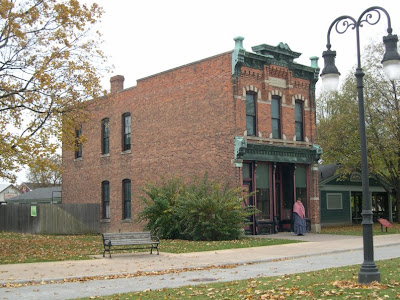Plymouth Carding Mill a.k.a. Gunsolly Carding Mill
 Until the 19th century, America was basically a hand-crafted nation, with artisans working at home or in small shops where the human hand (and water) were the main sources of power.
Until the 19th century, America was basically a hand-crafted nation, with artisans working at home or in small shops where the human hand (and water) were the main sources of power.This circa 1850-51 carding mill - built by John Gunsolly - was originally located west of Dearborn on the Middle Rouge River, and illustrates the changeover from hand-operated (carding paddles) to labor-saving mechanical equipment brought about by the industrial revolution, which resulted in the mass production and mass supply of goods.

Henry Ford and his father (and many other farmers in the area) used to bring raw wool sheared from their flocks of sheep to this very mill - nearly a three hour trip from the Ford farm - where the wool was carded - a process where fibers are opened, cleaned, and straightened in preparation for spinning - and made into rovings (a long and narrow bundle of fiber with a twist to hold the fiber together), which were then taken home for spinning into thread or yarn by their wives and daughters.  The machine that made life so much easier for women of the 19th century
The machine that made life so much easier for women of the 19th century
 The machine that made life so much easier for women of the 19th century
The machine that made life so much easier for women of the 19th centuryJohn Gunsolly ran this mill from 1850-51 to 1870. Many farmers would exchange their loads for a proportionate amount of the carded rovings instead of paying cash - a barter system.
By the end of the 19th century, larger mills - many located on the east coast of our country - took away business from the smaller ones such as this. A closer look at the carding mechanism
A closer look at the carding mechanism
 A closer look at the carding mechanism
A closer look at the carding mechanism.



Comments